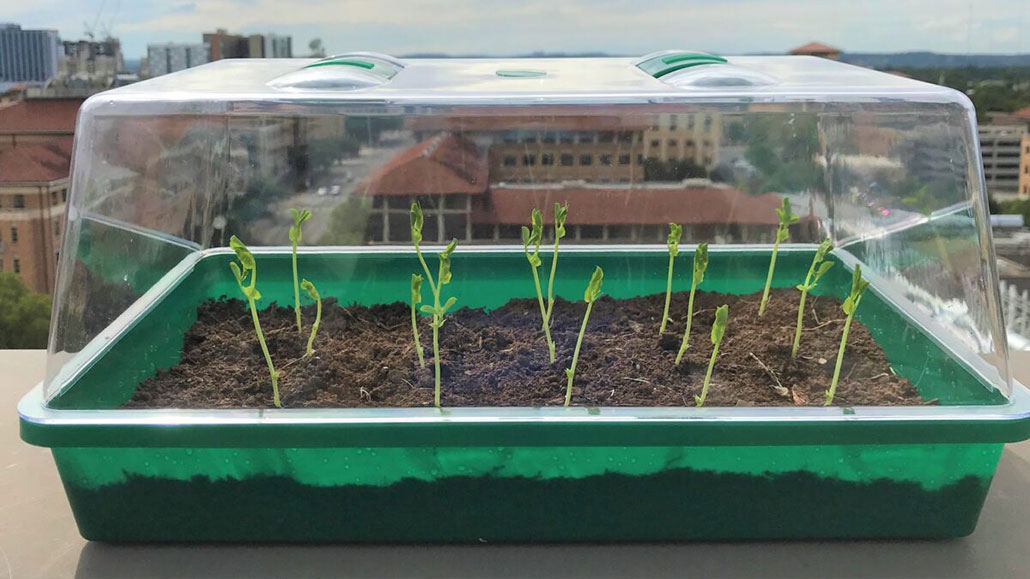Questions for “Dew collector brings water to thirsty plants”

Radish seedlings grow in self-watering soil on the roof of a building in Texas.
Cockrell School of Engineering, The University of Texas at Austin

Radish seedlings grow in self-watering soil on the roof of a building in Texas.
Cockrell School of Engineering, The University of Texas at Austin
Register to access:
An error occurred. Please try again.
Already Registered? Enter your e-mail address above.